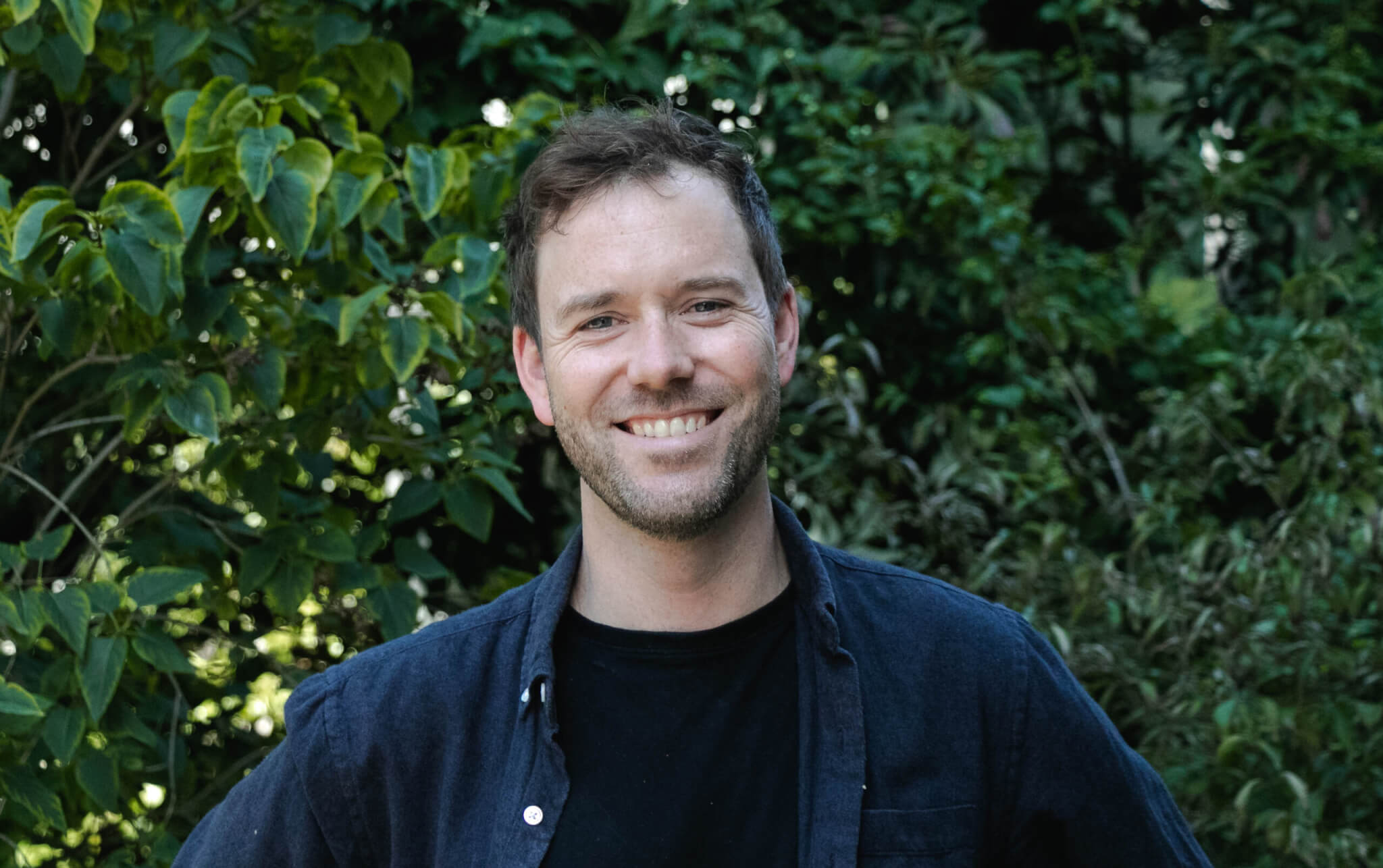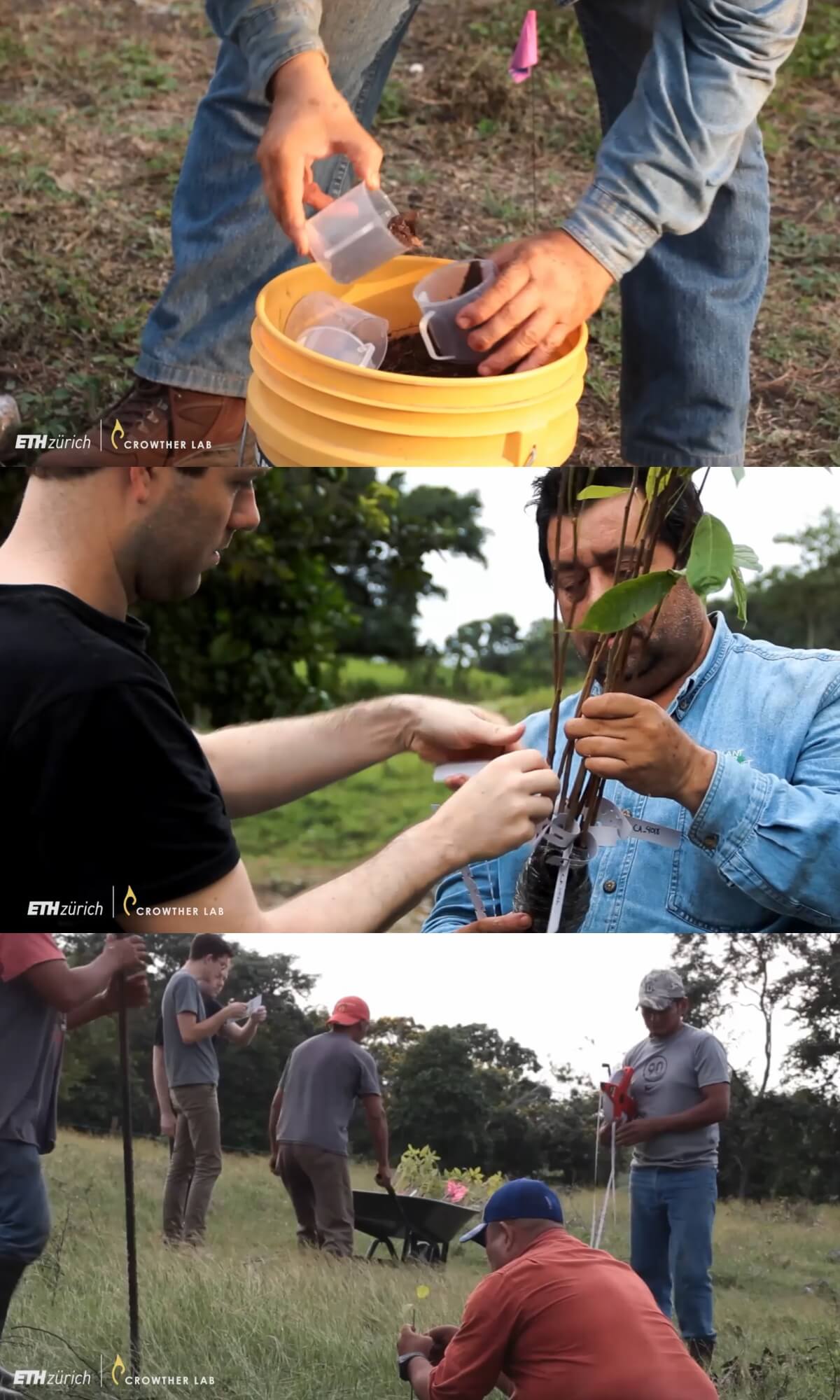
By: Colin Averill, Postdoc and Ambizione Research Fellow at Crowther Lab
We are witnessing a global movement to protect what is left of nature, as well as restore as much as we can. When we work to restore natural ecosystems, we generally start with the plants. In tropical forest ecosystems, we are often logistically constrained to planting just a subset of the original tree species that were once present. The idea is that this initial planting will “jump-start” the natural process of forest succession, leading to the recruitment of even greater biodiversity than we put in at planting, and eventually develop into a thriving forest ecosystem. Yet, so many restoration efforts fail. The trees we plant often die in places they once thrived, outcompeted by new species that have invaded the site. However, perhaps only considering the vegetation is too limited a view of what an ecosystem is, and which parts of the ecosystem are missing.
When we think of forests, we generally focus on what we can see – the plants and animals inhabiting the aboveground. However, just below the earth live incredibly diverse and complex communities of bacteria and fungi. These microorganisms are essential to how plants interact with the soil environment, and are necessary to access critically limiting soil resources. Many soil fungi form belowground networks among trees, allowing trees to share resources and buffer one another in stressful environments. These microorganisms are the forest microbiome. Yet, many key forest microbial species are missing in the post-agricultural landscapes where most forest restoration happens. It begs the question, what would happen if while planting trees we also “planted” the forest microbiome, jumpstarting not just the plants, but also their associated bacteria and fungi?

This is what our Ph.D. student, Felix Finkbeiner (also founder of Plant-for-the-Planet), is investigating with our team within the tropical dry forests of the Yucatán Peninsula of México. We’ve collected soil from intact forest remnants in the surrounding landscape, and use this soil as microbial inocula for soil microbiome restoration. The experimental setup is analogous to a randomized controlled drug trial. We’ve established 144 “blocks” of 100 trees across the landscape (14,400 trees!), and then randomly assigned the blocks to one of two treatment conditions. Half of the trees get a small scoop of forest inocula at the time of planting, while the other half gets a “placebo” dose of soil from the post-agricultural site we’re working to restore. Over the next several years we will be monitoring these trees to ask questions like:
- Does soil microbiome inoculation increase the recovery of native forest microbial biodiversity?
- Can microbiome inoculation increase tree growth, survival and carbon capture rates?
- Will microbiome introduction increase the recruitment of other tree species into the plots, above and beyond what we planted?
We are excited to discover what happens. But, success or failure, we will learn more about how forest ecosystems assemble and gain a deeper knowledge of when restoration succeeds and fails. Beyond questions of the forest microbiome, this project is an example of how restoration and science can happen at the same time. By nesting experiments within larger restoration projects, we can learn more about how forests work on a fundamental level, while simultaneously learning how to do restoration better.
We’ve established a similar trial in Wales, UK in collaboration with The Carbon Community, a UK charity. We’re excited to replicate and expand this work across more restoration sites in diverse parts of the world. By doing so, we can generate truly general knowledge about how the global forest system works, and how best to restore and protect it.
Learn more about our soil microbiome research project in Yucatán, Mexico:
